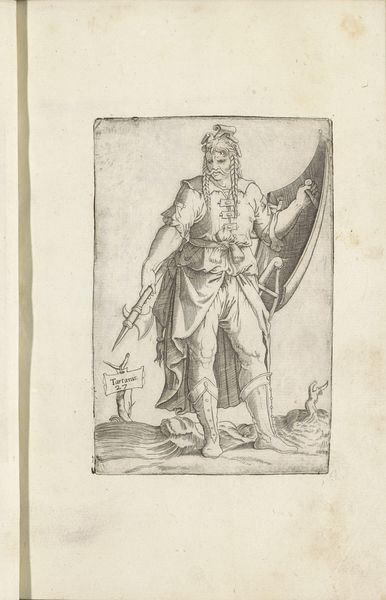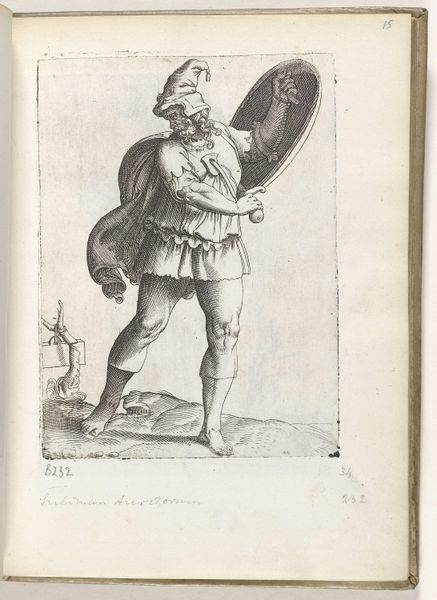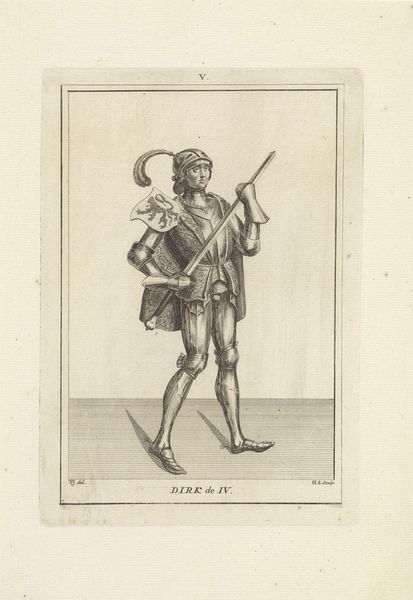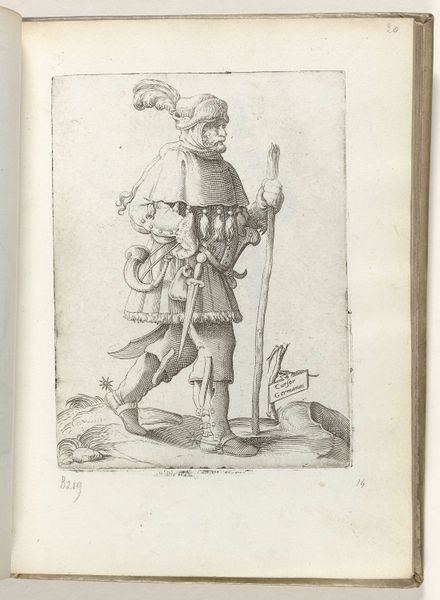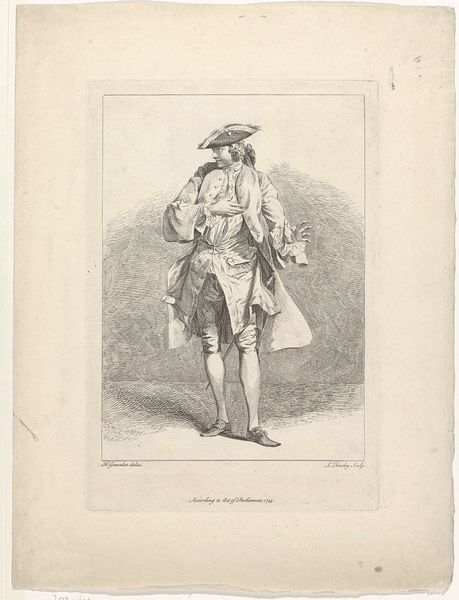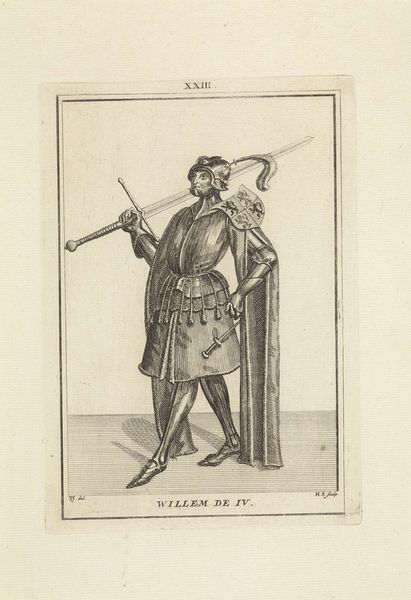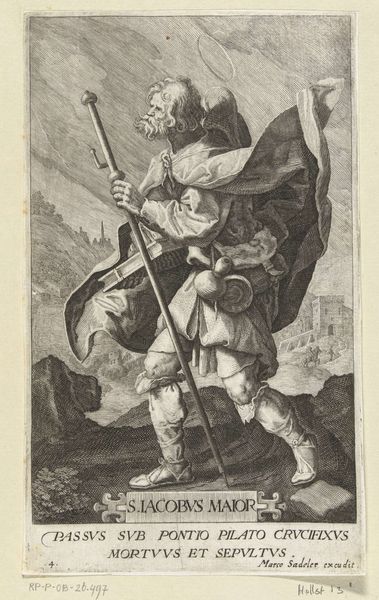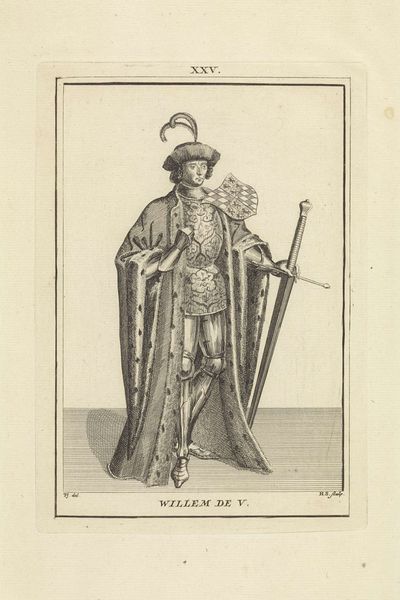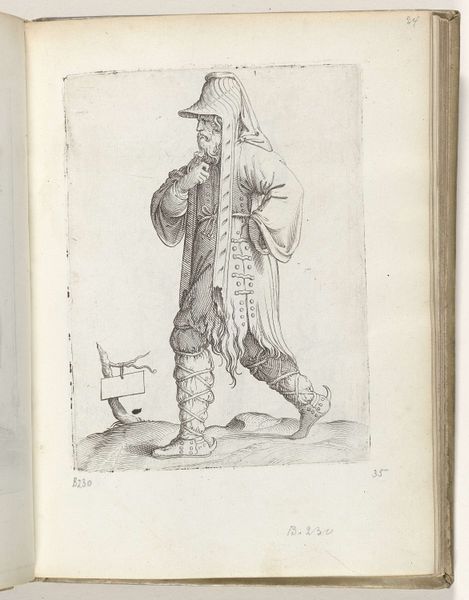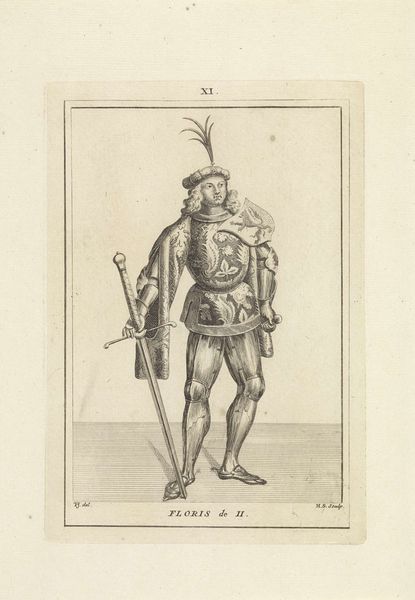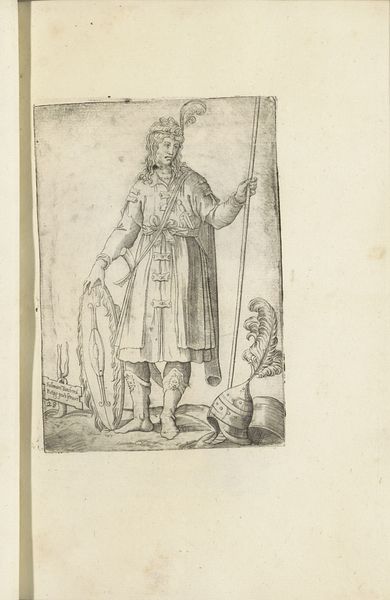
drawing, print, engraving
#
portrait
#
drawing
# print
#
mannerism
#
figuration
#
history-painting
#
italian-renaissance
#
engraving
Dimensions: height 150 mm, width 92 mm
Copyright: Rijks Museum: Open Domain
Curator: Looking at Enea Vico's print "Tartarus," created before 1558, now held in the Rijksmuseum, the first impression is rather stark. A solitary figure dominates, an engraving with fine lines depicting a character emanating brute strength in classical style. What do you see when you approach this print? Editor: I see a figure deeply entrenched in power structures, a visual embodiment of the social hierarchies of its time. His somewhat theatrical pose strikes me as less about conveying "brute strength" than it is about reinforcing an unquestioned dominance, the very act of ruling with impunity. Curator: Interesting. For me, it’s more about the visual language Vico employs, consistent with Mannerist traditions, like exaggerated musculature and a dynamic, almost restless composition. Tartarus here appears as a sentinel, a guardian of this underworld, echoing classical depictions, but distorted through the Mannerist lens. The symbolism feels heavily steeped in classical themes of punishment and justice. Editor: And it's those classical themes that I find especially revealing. The engraving doesn't just depict a mythical figure; it illustrates power consolidated, anxieties concerning hierarchy and social order that deeply permeated Renaissance society. The very act of eternal torment is visualized as this stern, unwavering dominance. Who exactly does it serve, this narrative of power solidified, this so-called "justice"? Curator: It seems to present a cautionary tale. Note how the engraving leverages elements drawn from mythology to explore enduring themes of consequence. We observe symbolic attributes—the shield and axe he carries reflect not only punishment, but authority, echoing classical antecedents and thus shaping cultural memory. Editor: I interpret the symbol of Tartarus more critically. While the narrative draws on a familiar structure, its visual force—a stern man postured at the entrance to hell, a symbolic representation of eternal suffering—functions almost like propaganda for those in power: "Step out of line and you too will be subject to the axe," essentially reinforcing control by instilling dread. Curator: So, to circle back, we have Enea Vico's engraving offering both a representation of enduring classical symbols and perhaps a revealing reflection of anxieties regarding power, discipline and order, from the distant past up to the present moment. Editor: Precisely, with Vico's "Tartarus," we are asked to explore these intersectional realms of historical power structures in order to understand better how we perpetuate systems of control—perhaps unintentionally—through narratives and visual symbolisms that reverberate to this day.
Comments
No comments
Be the first to comment and join the conversation on the ultimate creative platform.
